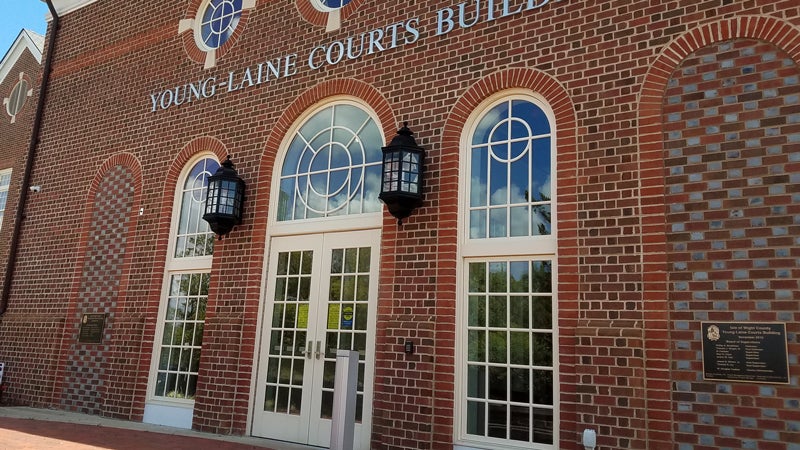‘The model’s broken:’ County leaders say state school funding isn’t enough
Published 3:08 pm Monday, October 24, 2022

- File photo
Isle of Wight and Surry county officials say Virginia funds an insufficient number of public school teachers – leaving localities with little choice but to make up the difference with local tax dollars.
According to data Isle of Wight County Schools Human Resources Director Laura Sullivan shared at a Sept. 21 joint meeting Isle of Wight’s School Board and Board of Supervisors, IWCS has 739 total employees this school year but is only required to employ a minimum of 537.24 positions under a formula Supervisor William McCarty called “outdated.”
Virginia’s Board of Education, a nine-member body appointed by the governor, currently mandates one teacher per 24 students in grades K-3, one per 25 in grades 4-6 and one per 21 at the middle and high school level in its “standards of quality,” or “SOQs.” According to the Virginia Association of Counties, the Board of Education reviews the SOQs every two years and submits its recommendations for consideration by the General Assembly in September or October.
According to Virginia Department of Education spokesman Charles Pyle, it then falls to the General Assembly to allocate state funding for public education via its Appropriations Act.
Based on the current SOQ teacher-to-student ratios and a divisionwide enrollment of just over 2,400 students in kindergarten through fifth grade during the 2021-22 school year, Isle of Wight is required to staff 15.35 third-grade teachers, according to Sullivan, but actually employs 19. Surry County — which had just 240 students enrolled at Surry Elementary last school year, 50 of them in third grade — would need a minimum of 2.08 third-grade teachers to meet the one per 24 ratio, but actually employs four.
According to IWCS Chief Financial Officer Rachel Trollinger, the state uses a formula known as the “composite index” to determine a locality’s ability to pay the costs associated with meeting Virginia’s standards of quality, which then determines how much state funding each school division receives to hire the required positions. The formula, she explained, weights a locality’s real estate values at 50%, adjusted gross income at 40% and taxable retail sales as the remaining 10%. From this, the state calculates each locality’s required “local match” to be paid with city or county tax dollars. According to a June 6 Virginia Department of Education memorandum, the 2022-24 composite index was recalculated this year using 2019 base-year data provided by the Virginia Department of Taxation, population estimates by the University of Virginia’s Weldon Cooper Center, also from 2019, and the average daily membership school divisions reported to the state Department of Education on March 31, 2020.
Based on the composite index calculation, the state funded Isle of Wight County Schools $43.6 million and required Isle of Wight supervisors to contribute an additional $20.3 million to the county’s school system. Isle of Wight ultimately contributed 29% more, allocating the school system just under $26.3 million in its countywide 2022-23 budget in May.
Isle of Wight isn’t alone in exceeding the mandatory minimum. Gloucester County, which is similar in size to Isle of Wight at roughly 4,700 students, contributed $29.4 million to its school system – 66.8% above its mandatory $17.6 million local match.
“Most school divisions exceed the staffing minimums prescribed by the SOQ,” said VDOE spokesman Charles Pyle.
Isle of Wight had initially proposed an even higher local contribution, at $27.2 million, earlier this year, which would have reflected a nearly $527,000 increase from the county’s 2021-22 school funding. But the supervisors opted to cut $393,000 from the proposed increase, followed by McCarty persuading his fellow board members to “set aside” an additional $1.5 million as a last-minute May 12 amendment to the county’s budget.
McCarty, during the May 12 vote, noted the county had found itself in “interesting political crosswinds,” clarifying one week later he’d been referring to the then-unresolved state budget negotiations between Virginia’s Senate and House of Delegates. After hearing pushback from school personnel, who argued the reduction would result in layoffs and impact the school system’s ability to hire personnel ahead of the new school year, the supervisors voted on May 19 to put $760,000 of the set-aside money back into the budget.
By the end of IWCS’s Sept. 21 presentation, McCarty was taking issue more with the state than the local school system.
“The model’s broken, and I don’t mind faulting the state for that,” McCarty said.
“I think there’s a perception there with some of our citizens that look at, well, here’s what the state’s providing, why are we providing so much more?” said Supervisor Don Rosie. “This will help educate the general public on what is actually happening.”
“Every year we get the most criticism during the budget time,” said Board of Supervisors Chairman Rudolph Jefferson, proposing that the school system re-share the information Trollinger and Sullivan presented when making future budget requests.
Superintendent Dr. Theo Cramer, whom the School Board named as Thornton’s successor in August, contended Isle of Wight County Schools would be in “dire straits” were the county to ever decide to fund only the minimum required local match.
“We would not be the Isle of Wight that is revered and respected, that is attracting people from far and near to live and work here,” Cramer said, noting it would have a visible impact on the school system’s career and technical education program.
According to Sullivan, the state standards of quality only require Isle of Wight to have 9.17 vocational teachers. Isle of Wight employs 20, including two for the agriculture program and high school student-run working farm behind Windsor Elementary, five technology teachers, three engineering teachers, two marketing teachers, two JROTC teachers, a welding instructor, a culinary arts instructor, a nursing instructor, a building trades instructor, an early childhood education instructor and a cosmetology instructor.
Were the division to operate its CTE program with only the required nine teachers, “it would look nothing like it does right now,” said Deputy Superintendent Susan Goetz.
Surry Superintendent Dr. Serbrenia Sims agreed, in a Sept. 22 email to The Smithfield Times, that Surry and other schools systems “cannot operate with the bare minimum number of teachers and administrators that are funded by the state.”
Editor’s note: This story has been updated to correct the attribution of Isle of Wight County Schools’ SOQ data to Human Resources Director Laura Sullivan and Chief Financial Officer Rachel Trollinger, not Deputy Superintendent Susan Goetz.





